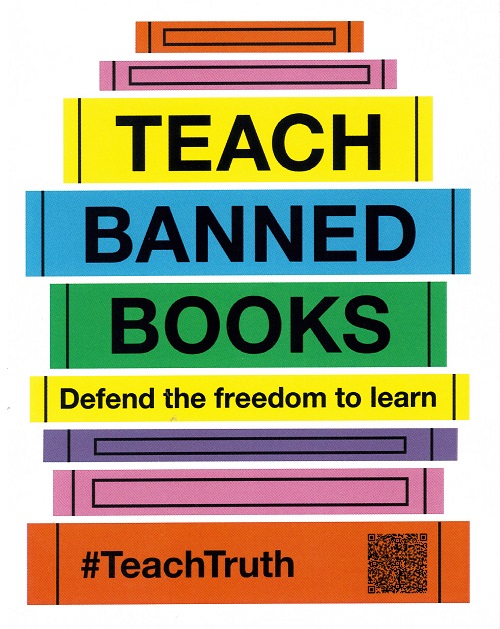
Welcome to our Banned Books lib guide.
Here you'll find the titles of every book we have in our physical lending library that is listed on either The American Library Association's 10 Most Challenged Books lists or on the website of a key book banning organization, No Left Turn in Education.
We include other titles from these lists - and links to their publishers or purchasing sites - to ensure easy access to titles we do not have on hand. If you would like us to purchase one for you to borrow, let us know!
We are glad and proud to share these books freely with congregations interested in supporting the authors and communities represented here.
Amidst a rising tide of anti-LGBTQ book bans, activists, authors, and librarians are organizing to make sure LGBTQ stories are still heard.
 Social Justice Books offers this list of 'critically reviewed selection of multicultural and social justice books for children, young adults, and educators'. The list if broken into Elementary, Middle School, High School, Educators, and Not Recommended (though we disagree about some of these).
Social Justice Books offers this list of 'critically reviewed selection of multicultural and social justice books for children, young adults, and educators'. The list if broken into Elementary, Middle School, High School, Educators, and Not Recommended (though we disagree about some of these).
Marshall Libraries Banned Books 2022 [Marshall University (Huntington, WV ) does not ban books.]
50 Books Parents Want Banned in Texas
 We’re All Responsible for Protecting Public Libraries
We’re All Responsible for Protecting Public Libraries
by Amanda Jones in Yes! Magazine online
09.03.24 - 8 minute read
'The pro-censors are loud and obnoxious, and they’re only growing bolder. They’ll continue their rampage unless rational people speak out against them. This movement could have detrimental effects on our schools and libraries for decades to come if we don’t consistently confront them.'
Please see our Banned Books Build Community and Public Library Love Great Ideas for action steps you can take.
To Kill a Mockingbird by Harper Lee
*Reasons: Banned and challenged for racial slurs and their negative effect on students, featuring a “white savior” character, and its perception of the Black experience
Of Mice and Men by John Steinbeck
*Reasons: Banned and challenged for racial slurs and racist stereotypes, and their negative effect on students